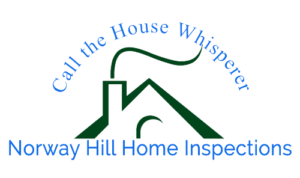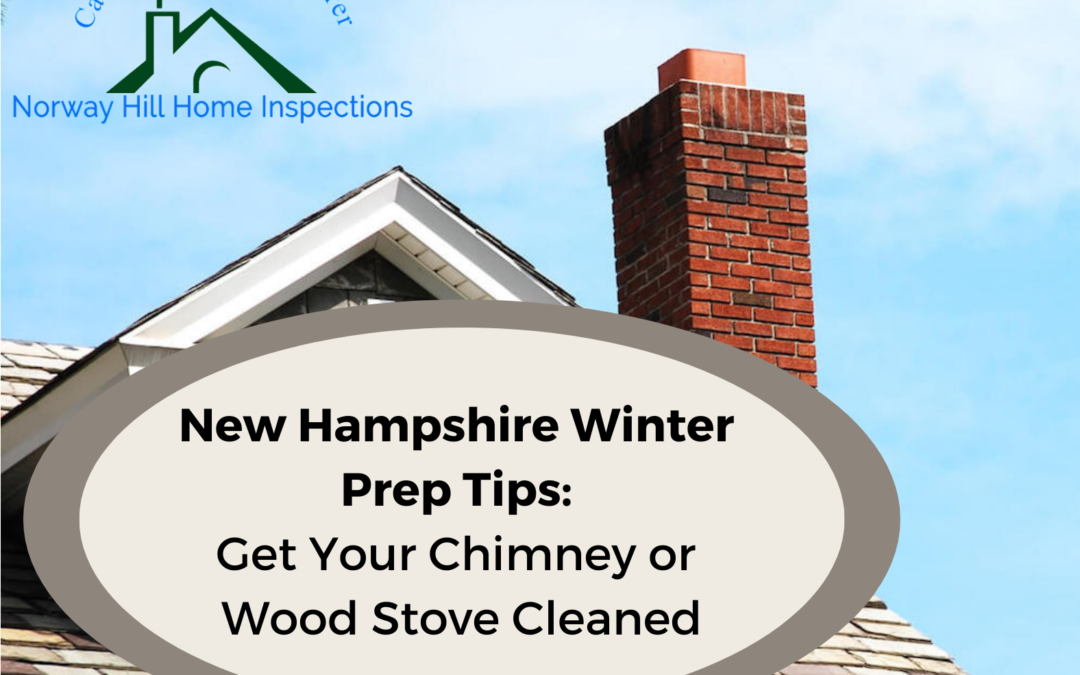The cool weather is beginning to set in; and while we all take a collective sigh of relief from the heat, our minds also turn to cool-weather activities and the upcoming cozy winter nights at home. One of the coziest and most convenient sources of heat is that of a fireplace or wood-burning stove, which many families utilize in their homes. But there can be great risk using these forms of heat if they aren’t properly or regularly maintained. And the proper maintenance for a wood-burning fireplace or stove would be an annual inspection and cleaning.
If you are wondering if it’s really necessary to get your chimney or wood-burning stove taken care of by a professional every year, then here are the reasons why you should do it.
New Hampshire Winter Prep Tips: Get Your Chimney or Wood Stove Cleaned
 Why Do You Need To Get Your Chimney or Wood Stove Cleaned?
Why Do You Need To Get Your Chimney or Wood Stove Cleaned?
Simply put: not getting your chimney or wood stove cleaned is a major safety hazard. There are thousands of chimney fires every year in the United States, but a chimney fire can be easily avoided with an annual cleaning.
When you burn a fire in your fireplace or wood stove, two things happen: first, soot and creosote build up in the chimney lining. This can be dangerous because creosote is extremely flammable.
So making sure to have a professional chimney sweep service clean out your chimney each year outside of the burning season is crucially important to the safety of your home and family.
Why Should You Have Your Chimney or Wood Stove Inspected?
Not only should you get your chimney or wood stove cleaned, but you should have it inspected as well. A Certified Chimney Inspector will look for a number of things outside of just the soot and creosote build-up inside the chimney. They will take a look at the chimney for any obstruction, damage, or structural issues.
There are three levels of chimney inspections that can be performed depending on the condition of your chimney or wood stove.
- Level One: This is a basic inspection where an inspector can examine the easily accessible portions of your chimney. This is where they can check that the structure is sound and ensure that all the chimney’s components are working properly. If your chimney is in good condition and you aren’t experiencing any problems with your fireplace, this will most likely be the level of your regular, annual inspections.
- Level Two: This level of inspection will likely involve your chimney sweep using camera equipment to fully inspect the inside of your chimney in addition to inspecting the easily accessible parts of your chimney. They may add in an inspection of your attic, crawl space, or basement. This sort of inspection occurs when any changes are made to your chimney, such as a change in fuel type or getting a new liner, or after any potentially damaging events like a fire or an earthquake. This level of inspection is required when you sell your home, according to the Chimney Safety Institute of America (CSIA).
- Level Three: This is a thorough inspection of every part of your chimney, including any covered or hidden portions that can only be reached using special tools. It may require demolition and rebuilding parts of the chimney, depending on what needs to be done.
Fire Safety Tips for the Upcoming Heating Season
More fires happen during the cold months than at any other time of the year. During the winter months, we spend a lot more time indoors and use different methods to heat our homes, including fireplaces, wood-burning stoves, and portable heaters. So proper heat and fire safety is important to keep in mind. Here are some great fire safety tips to keep in mind as the cold season approaches and we start using those alternative heating methods.
 If you are using your fireplace:
If you are using your fireplace:
- Keep a glass or metal screen in front of the fireplace to prevent sparks or embers from jumping out and starting a fire.
- Do NOT burn paper in your fireplace.
- Make sure the fire is out completely before leaving your house or going to sleep at night.
- Put the ashes in a metal container with a lid and store it outside at least 3 feet from your house.
If you are using a wood-burning stove:
- Have your chimney inspected and cleaned by a professional before using your wood stove.
- Keep anything flammable at least 3 feet away from the stove.
- Do NOT burn paper in your wood stove.
- Before you leave or go to sleep, make sure the fire is completely out in the stove.
If you are using a portable heater:
- Make sure the heater has an automatic shut-off in case it tips over.
- Keep anything flammable or that can burn (like bedding, clothing, or curtains) at least 3 feet away from the heater.
- Plug the portable heaters directly into a wall outlet. Don’t ever use an extension cord or power strip.
- Turn heaters off when you go to bed or leave a room.
When you are heating your home, you also need to be aware of carbon monoxide (CO). This “invisible killer” is colorless, odorless, poisonous, and is responsible for accidental deaths in the United States every year. Breathing in high levels of CO can kill you.
You can prevent these accidental deaths by putting carbon monoxide detectors throughout your home. These can warn you of the early traces of CO so you can be aware of it before it hurts anyone. Make sure you have both a carbon monoxide detector and a smoke detector on every floor of your home and in the sleeping areas of the home as well. Test your alarms every month to make sure they are working properly, and have a home fire escape plan that the entire family is aware of and practices at least twice a year.
Fire safety is no joke, so make sure you, your family, and your home are ready for these upcoming winter months so you can enjoy them worry-free.

